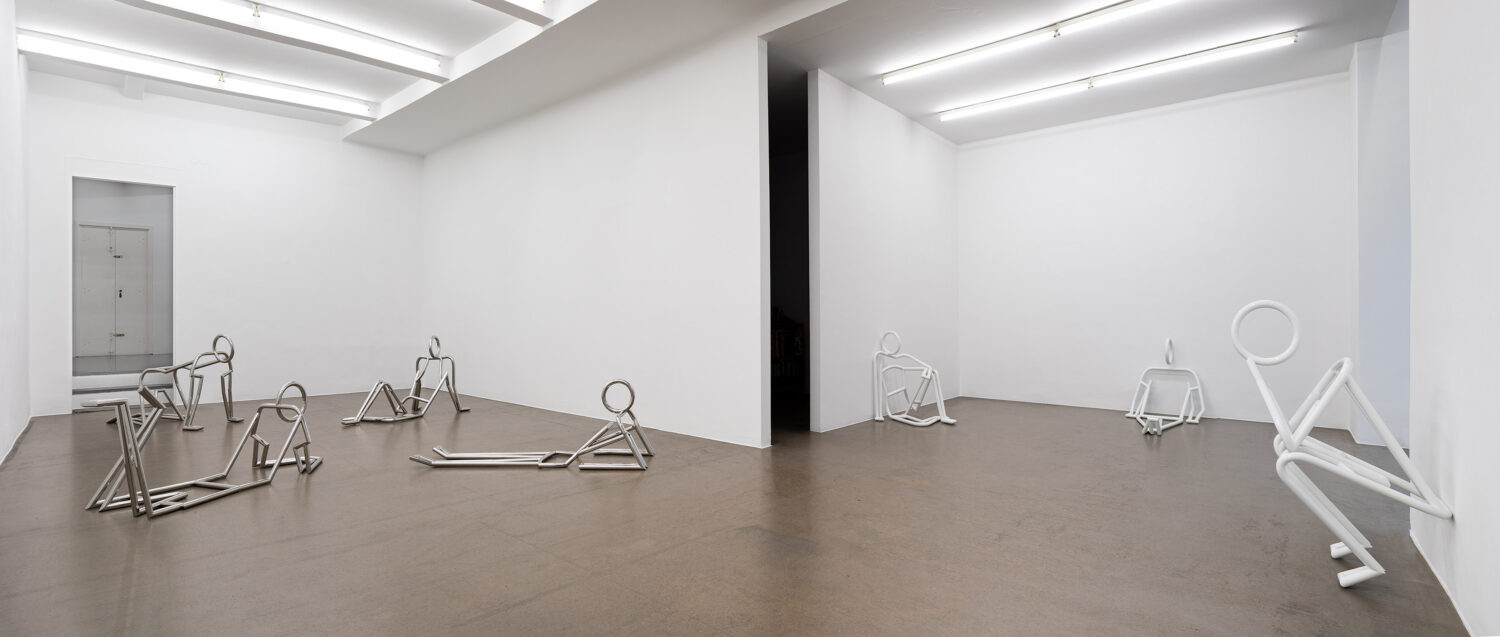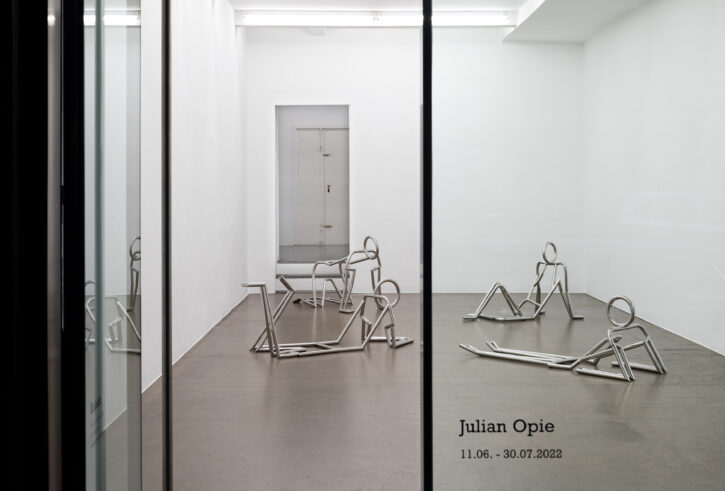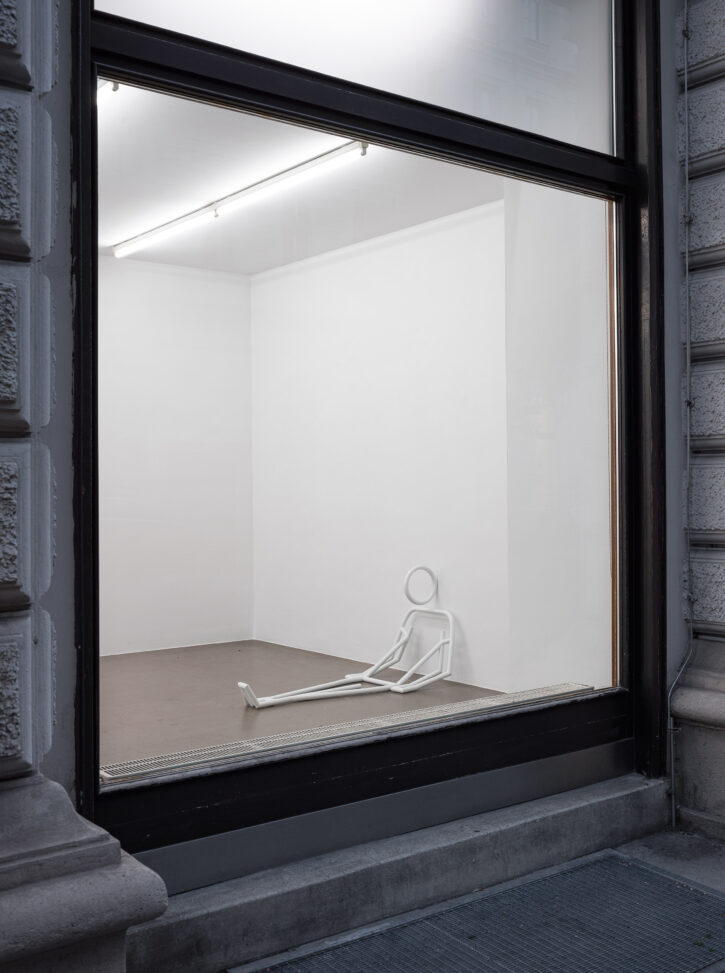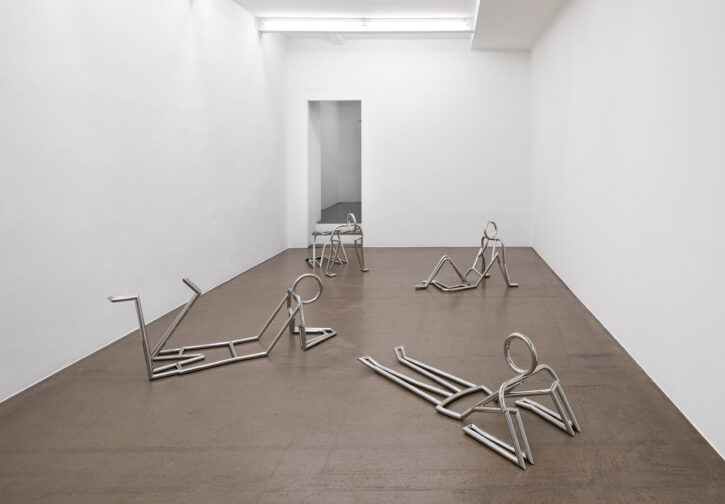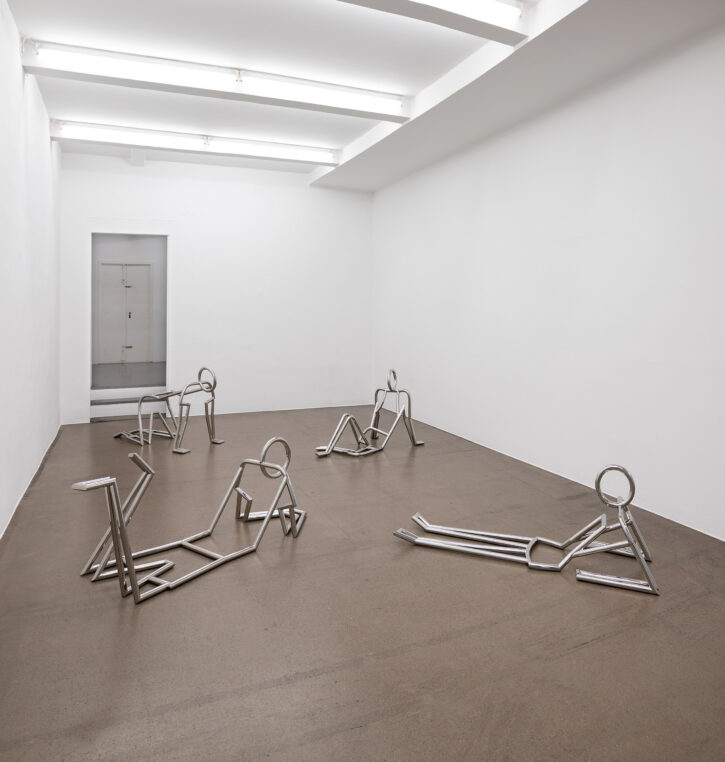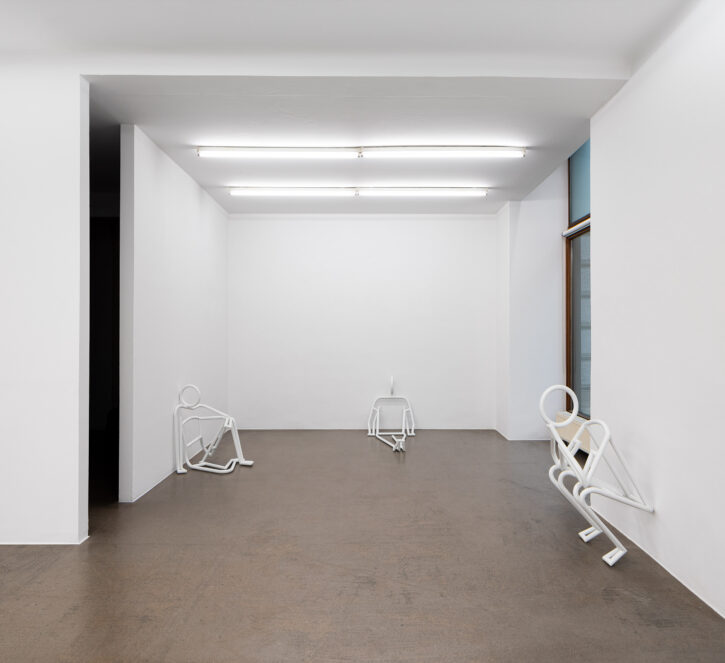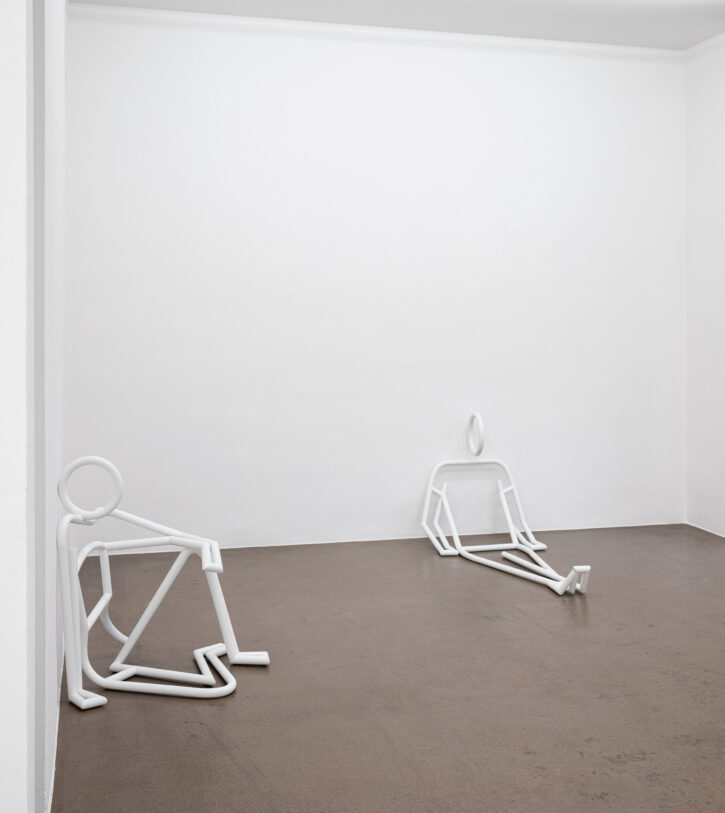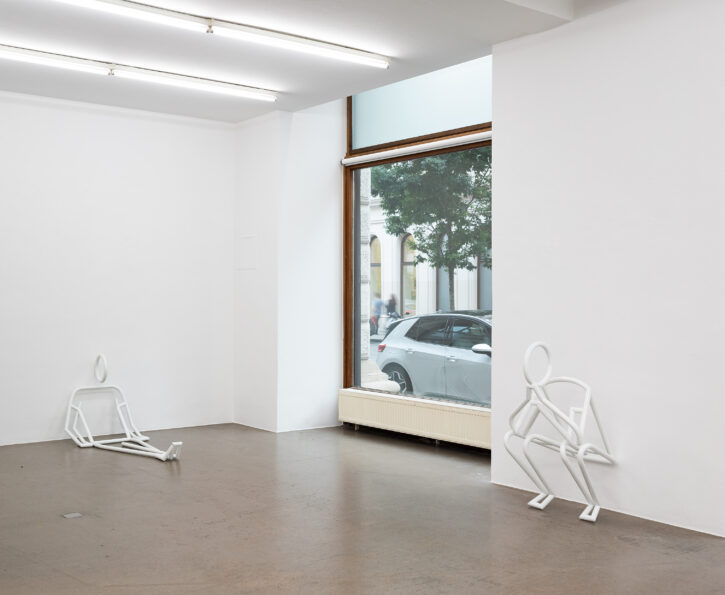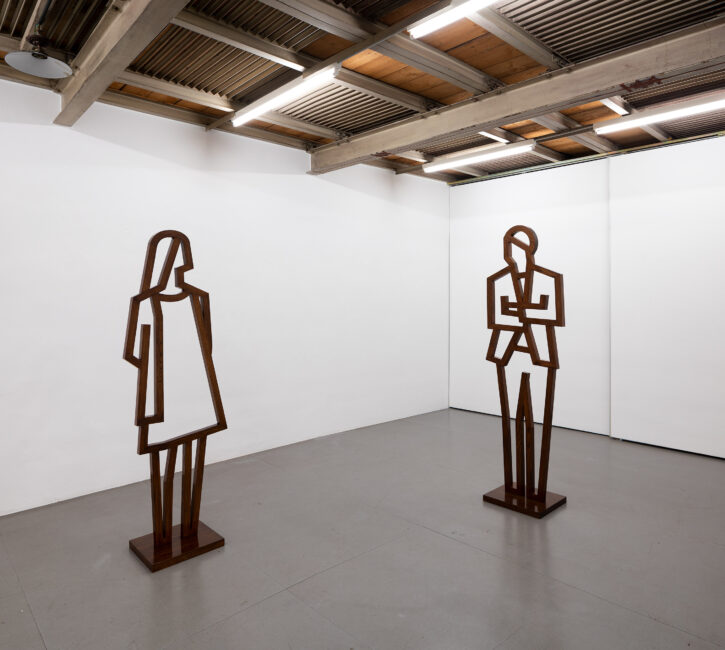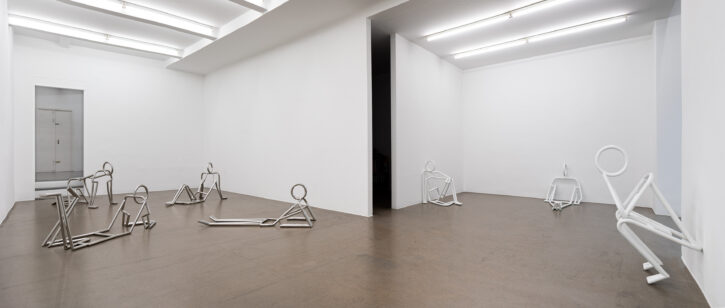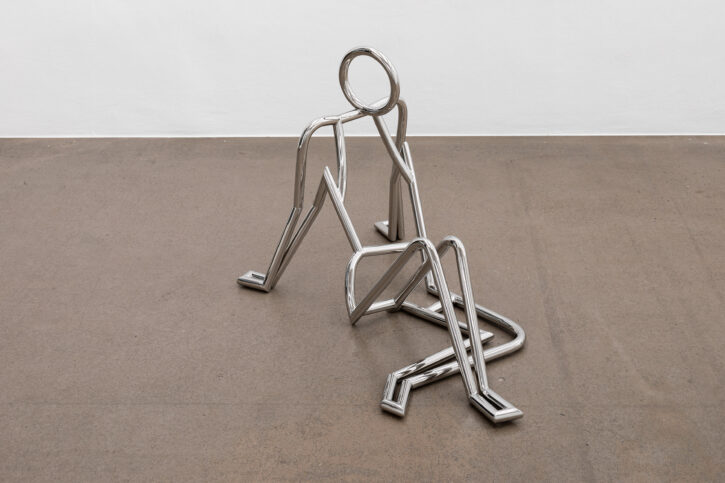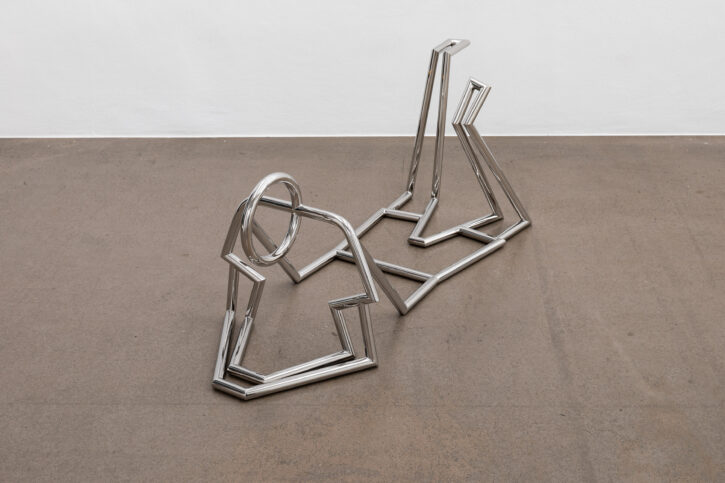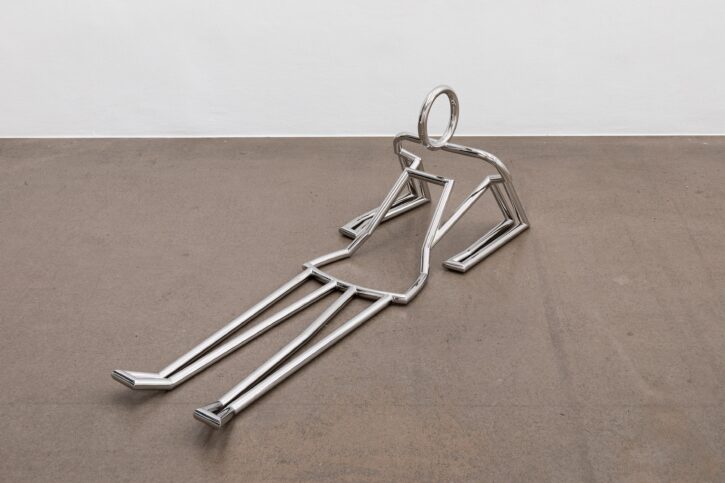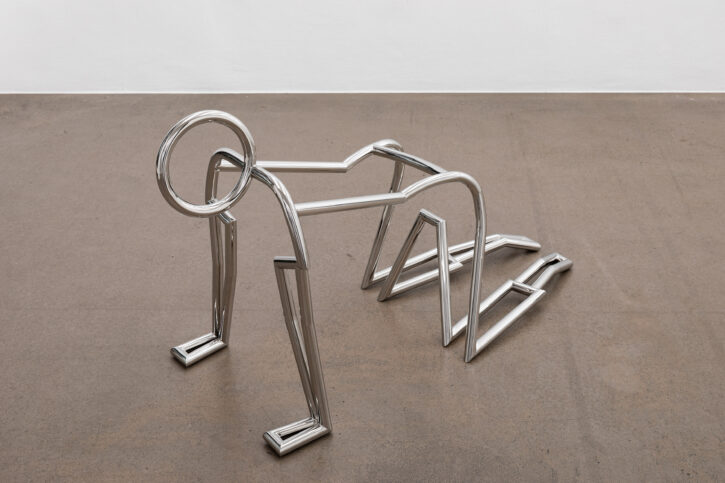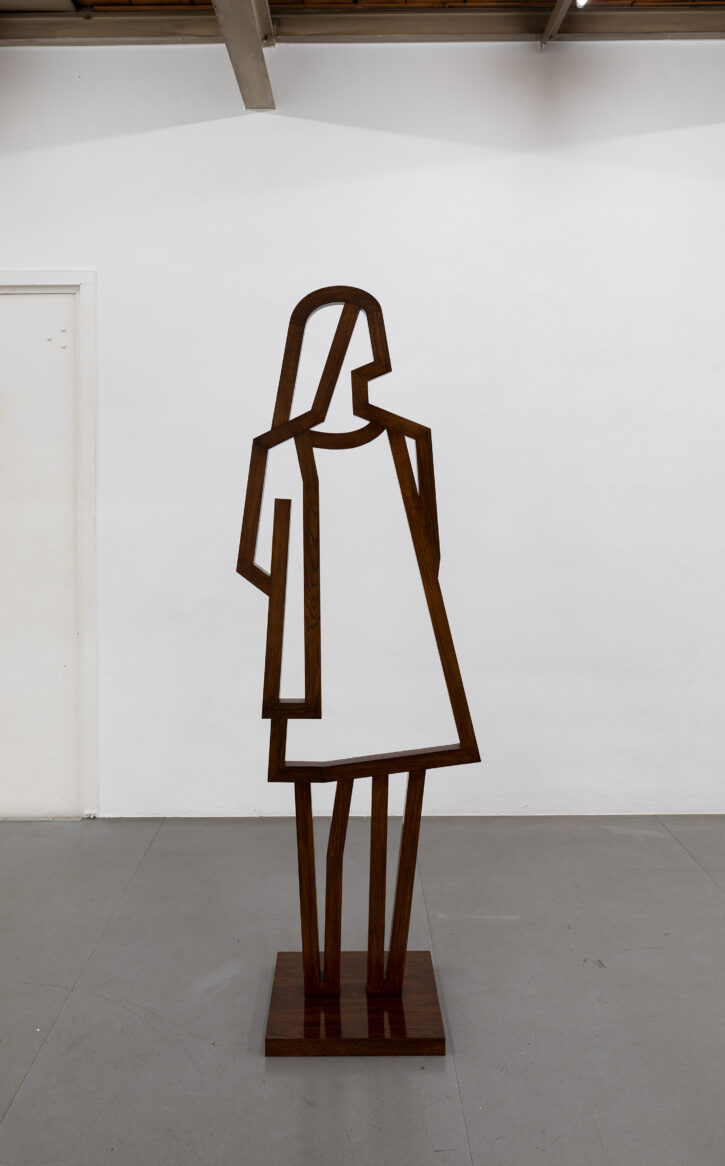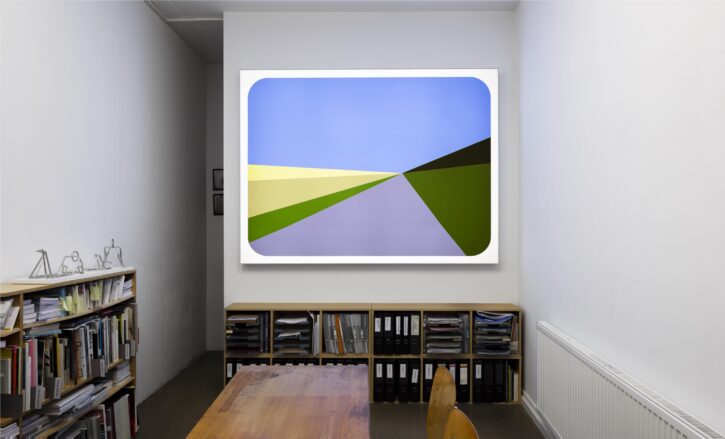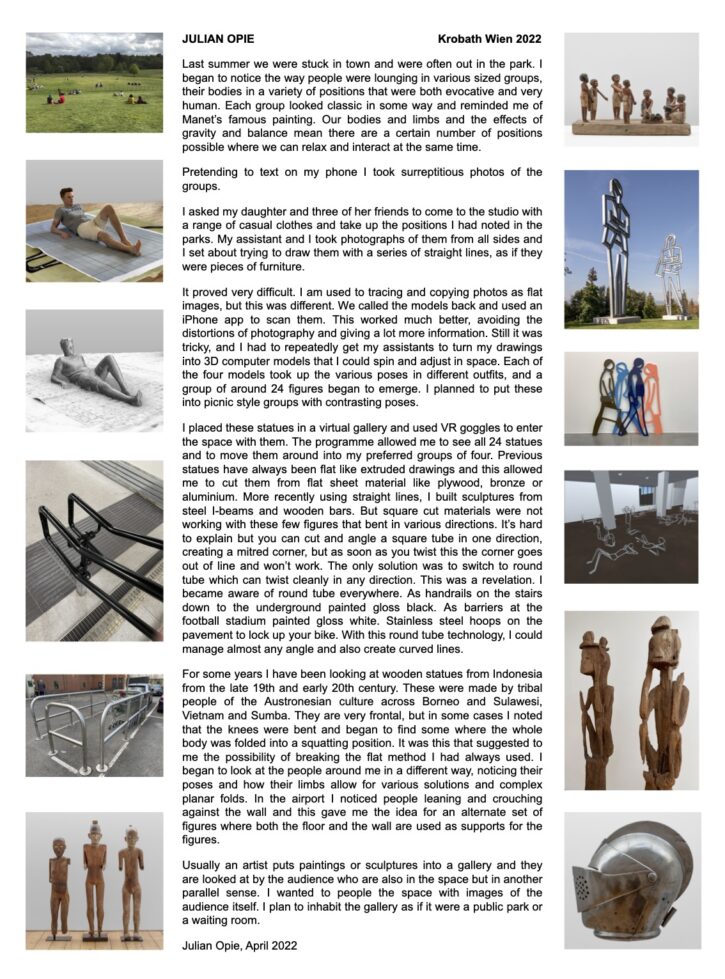About the exhibition
Last summer we were stuck in town and were often out in the park. I began to notice the way people were lounging in various sized groups, their bodies in a variety of positions that were both evocative and very human. Each group looked classic in some way and reminded me of Manet’s famous painting. Our bodies and limbs and the effects of gravity and balance mean there are a certain number of positions possible where we can relax and interact at the same time.
Pretending to text on my phone I took surreptitious photos of the groups.
I asked my daughter and three of her friends to come to the studio with a range of casual clothes and take up the positions I had noted in the parks. My assistant and I took photographs of them from all sides and I set about trying to draw them with a series of straight lines, as if they were pieces of furniture.
It proved very difficult. I am used to tracing and copying photos as flat images, but this was different. We called the models back and used an iPhone app to scan them. This worked much better, avoiding the distortions of photography and giving a lot more information. Still it was tricky, and I had to repeatedly get my assistants to turn my drawings into 3D computer models that I could spin and adjust in space. Each of the four models took up the various poses in different outfits, and a group of around 24 figures began to emerge. I planned to put these into picnic style groups with contrasting poses.
I placed these statues in a virtual gallery and used VR goggles to enter the space with them. The programme allowed me to see all 24 statues and to move them around into my preferred groups of four. Previous statues have always been flat like extruded drawings and this allowed me to cut them from flat sheet material like plywood, bronze or aluminium. More recently, using straight lines, I built sculptures from steel I-beams and wooden bars. But square cut materials were not working with these new figures that bent in various directions. It’s hard to explain but you can cut and angle a square tube in one direction, creating a mitred corner, but as soon as you twist this the corner goes out of line and won’t work. The only solution was to switch to round tube which can twist cleanly in any direction. This was a revelation. I became aware of round tube everywhere. As handrails on the stairs down to the underground painted gloss black. As barriers at the football stadium painted gloss white. Stainless steel hoops on the pavement to lock up your bike. With this round tube technology, I could manage almost any angle and also create curved lines.
For some years I have been looking at wooden statues from Indonesia from the late 19th and early 20th century. These were made by tribal people of the Austronesian culture across Borneo and Sulawesi, Vietnam and Sumba. They are very frontal, but in some cases I noted that the knees were bent and began to find some where the whole body was folded into a squatting position. It was this that suggested to me the possibility of breaking the flat method I had always used. I began to look at the people around me in a different way, noticing their poses and how their limbs allow for various solutions and complex planar folds. In the airport I noticed people leaning and crouching against the wall and this gave me the idea for an alternate set of figures where both the floor and the wall are used as supports for the figures.
Usually an artist puts paintings or sculptures into a gallery and they are looked at by the audience who are also in the space but in another, parallel sense. I wanted to people the space with images of the audience itself. I plan to inhabit the gallery as if it were a public park or a waiting room. with images of the audience itself. I planned to inhabit the gallery as if it were a public park or a waiting room.
Text: Julian Opie
Exhibition opening: June 11, 2022
Duration: June 11 – July 30, 2022
Further informations:
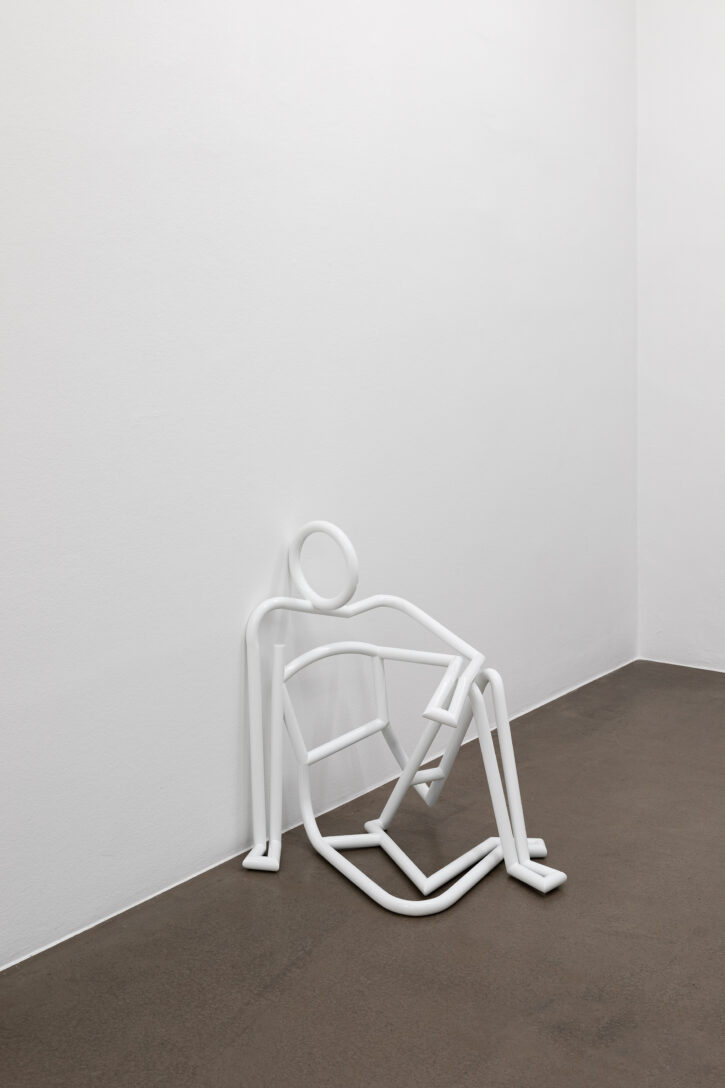
Figure 1, position 11., 2022
Auto paint on stainless steel
Unique
83 x 62 x 79 cm
Photo: Rudolf Strobl.
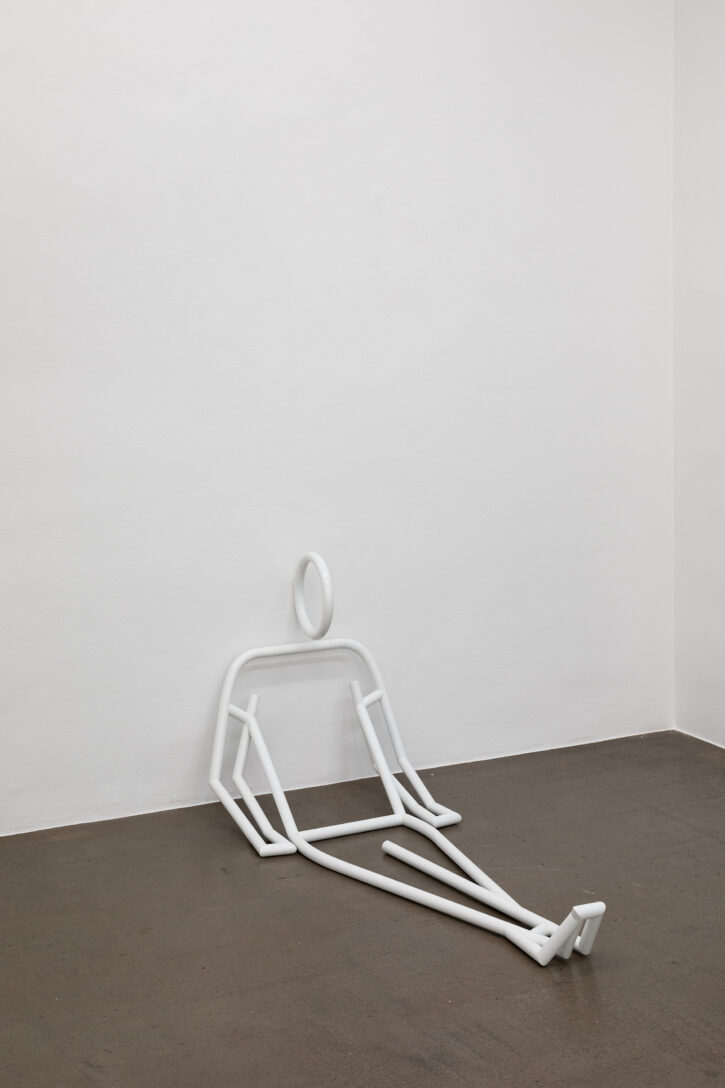
Figure 2, position 12., 2022
Auto paint on stainless steel, Unique
76 x 66 x 152 cm
Photo: Rudolf Strobl.
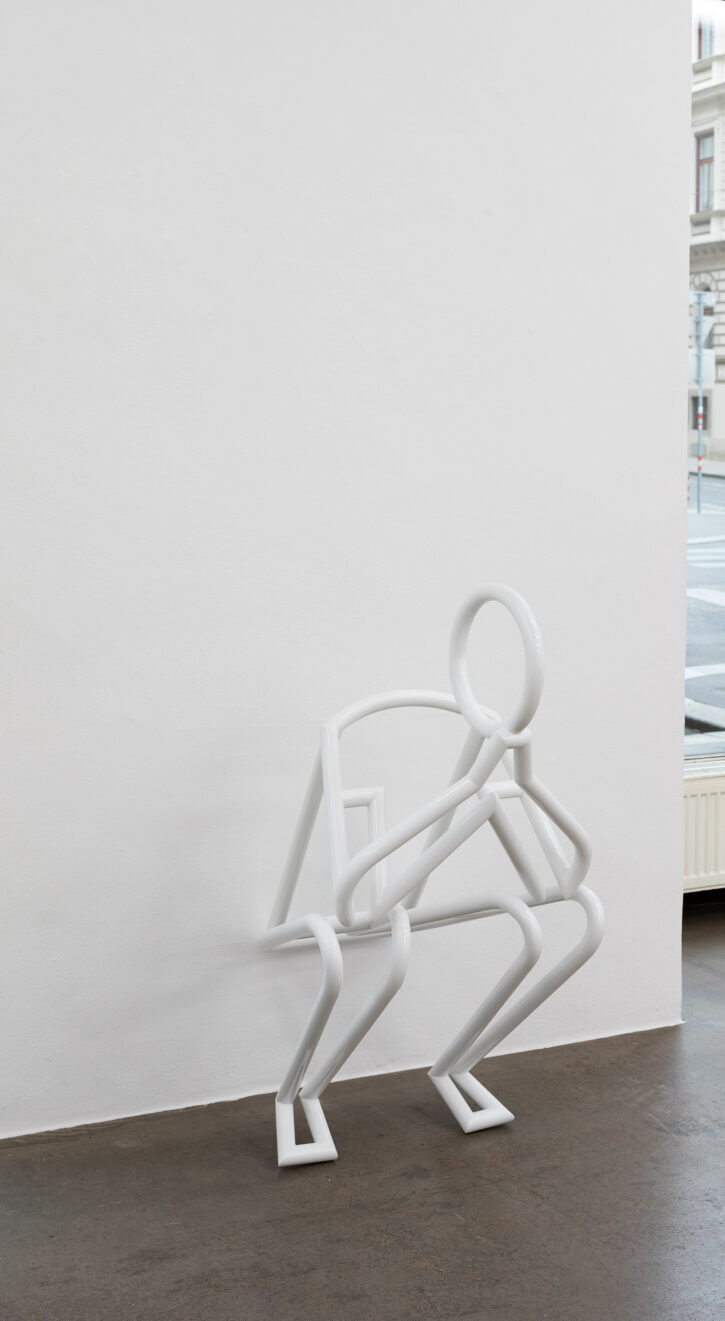
Figure 2, position 13., 2022
Auto paint on stainless steel Unique
101 x 61 x 63 cm
Photo: Rudolf Strobl.
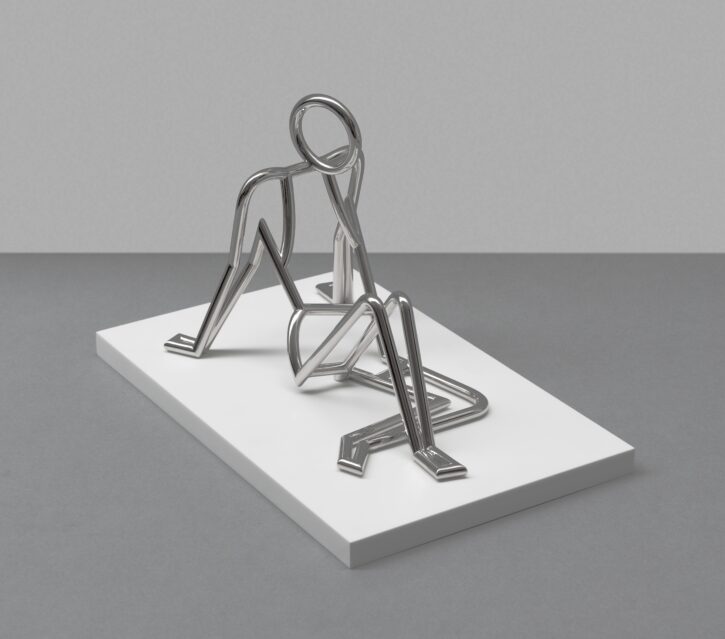
Figure 1, position 5., 2022
Nickel plated resin with Corian base
Ed. 1/3
18.7 x 16.4 x 29.2 cm (22 x 34.6 x 2 cm base)
Courtesy: The Artist.
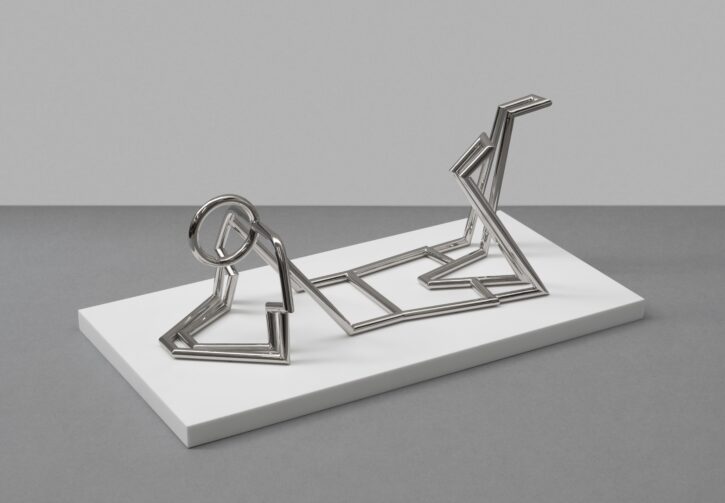
Figure 2, position 4., 2022
Nickel plated resin with Corian base
Ed. 1/3
14.6 x 13.8 x 38.4 cm (22 x 43 x 2 cm base)
Courtesy: The Artist.
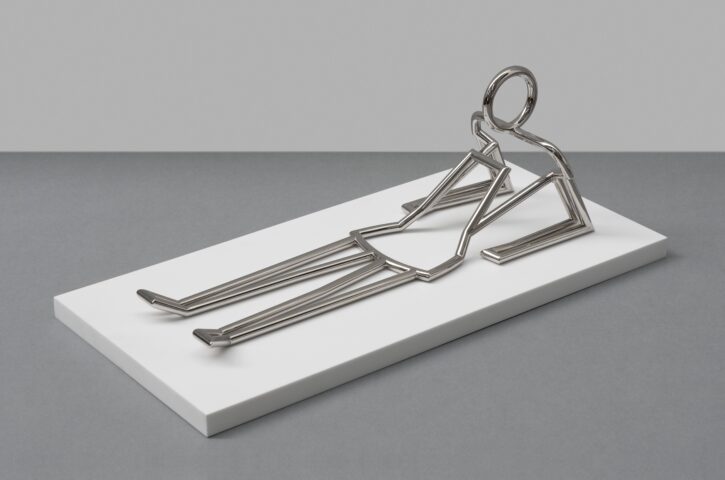
Figure 3, position 9., 2022
Nickel plated resin with Corian base
Ed. 1/3
14.1 x 13 x 38.6 cm (22 x 46.6 x 2 cm base)
Courtesy: The Artist.
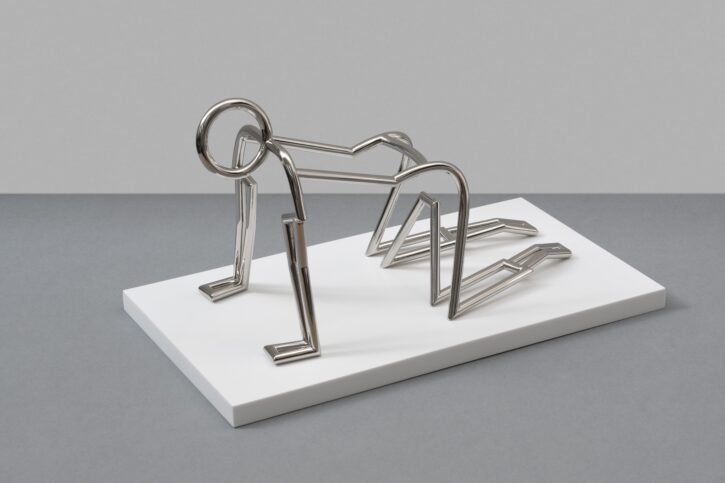
Figure 4, position 8., 2022
Nickel plated resin with Corian base Ed. 1/3
19.5 x 15.5 x 33.8 cm (22 x 40 x 2 cm base)
Courtesy: The Artist.
